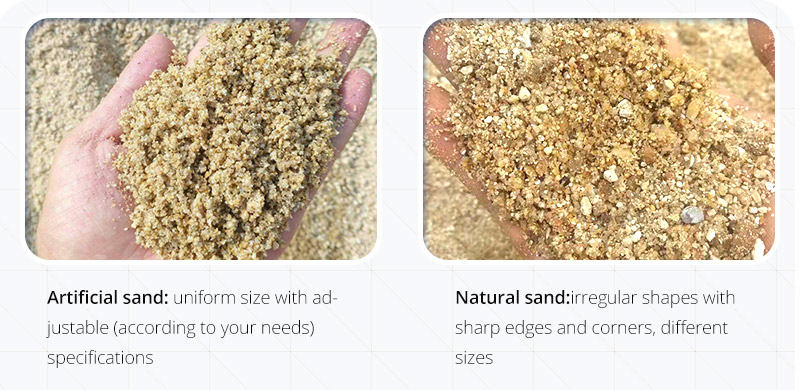Natural sand has always been one of the most needed resources for the construction industry. However, as it has become increasingly depleted, the production of high-quality natural sand has been unable to meet the demand of the construction industry.
Some people yield, “Don’t worry, we got desert sand.”
However, the desert sand let them down for the following reasons.
Firstly, the desert sand has a very high alkali content, which is very deadly.
Because our current construction sand emphasizes the alkali content of sand, if we use desert sand to build a building, the sand with high alkali content will have a chemical reaction with cement and water, resulting in the final formed cement. The mortar is not strong enough. Insufficient cement mortar strength will directly lead to wall cracking, resulting in serious consequences. So it’s deadly in terms of alkali content.
Secondly, the desert sand is too fine. The sand used in construction is generally coarse sand or medium sand. The diameter of the sand is generally less than 0.3 mm. If the sand in the desert is used to make cement mortar, it will become runny and difficult to solidify, so it cannot be used as construction sand at all.
Last but not least, desert sand contains a lot of clay, which greatly affects the strength of concrete.
Natural sand is exhausted and desert sand cannot be used. It looks like we have to consider artificial sand. But what is artificial sand?
Artificial sand, also called crushed sand or mechanical sand (m sand), refers to rocks, mine tailings or industrial waste granules with a particle size of less than 4.75 mm. It is processed by mechanical crushing and sieving.
Why should I choose artificial sand over natural sand?
Compared with natural sand, the artificial sand has the following advantages:
- Quality advantage: The source of sand resources is stable; mechanized production mode ensures an adjustable and controllable quality.
- Grade advantage: artificial sand has high surface energy and hydrophilicity; it has complete gradation; the particles gradation is stable and adjustable; the grain shape can be improved.
- Management advantages: There are stable legal entities, mining licenses, fixed business locations, which is easy to trace.
- Resource advantages: In addition to mines, various waste resources such as tailings and construction waste can be utilized.
Here comes a new question, how do we make artificial sand?
Normally, we use the following six machines to make artificial sand.
- HVI sand making machine
- VSI sand making machine
- Roller crusher
- Compound crusher
- Hammer crusher
- Mobile sand making machine
Then how do we choose the right sand making machine?
When choosing a machine-made sand production line, we should consider the following points:
- What is your investment budget?
The common equipment combination in the crushing stage in the production process of machine-made sand is jaw crusher + impact crusher + HVI sand making machine or VSI sand making machine.
More equipment means higher investment. For low investment, you can consider these combinations:
- Jaw crusher + Roller crusher
- Jaw crusher + Hammer crusher
- Jaw crusher + Compound crusher
- What is your material to be crushed?
If your rocks used to make artificial sand are bulk, the common equipment combination would be a good choice.
If your material is humid or hard, choose the compound crusher or roller crusher.
If the crushing site is not fixed, you can choose the mobile sand making machine, which can switch equipment and sites according to your needs.
Artificial sand has unparalleled advantages, advanced sand making equipment and a hot market, so why not choose artificial sand?

